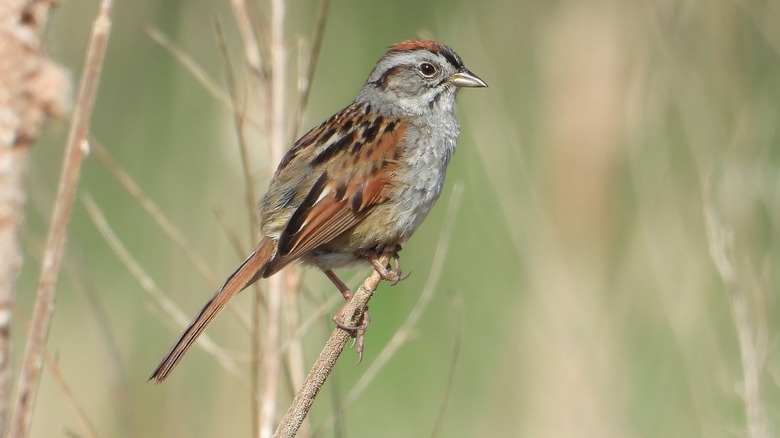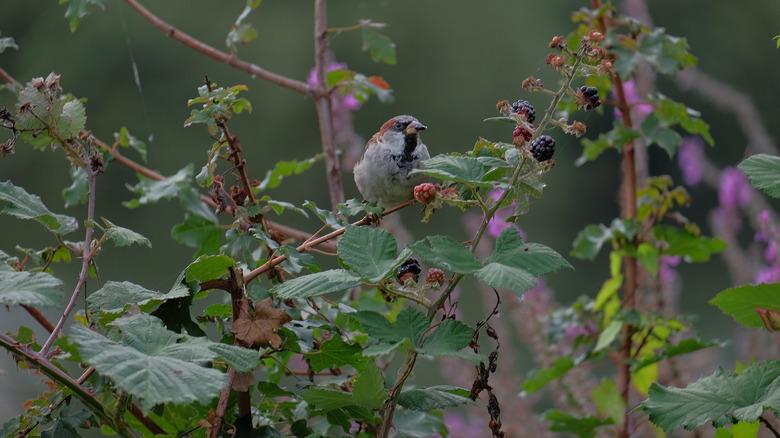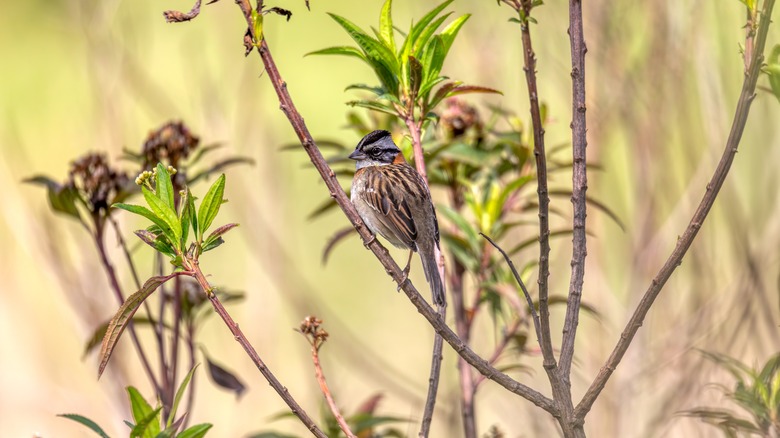Create A Sparrow-Friendly Habitat With Native Plants They Enjoy
Birds and native plants go hand in hand when cultivating a healthy, balanced local ecosystem. In return for providing them with nourishment, birds spread the seeds of these plants much farther than they could ever hope to reseed on their own. Sparrows — which actually include over 35 different species in North America alone — are one of the most popular types of songbirds to target when planning a garden yard that doubles as a wild bird habitat.
While sparrows certainly enjoy the seeds typically offered in bird feeders, they also tend to feed on berries and forage on the ground for insects as a part of their regular diet. Providing native plants can offer a wider variety of natural dietary components to sparrows than a bird feeder can. Native plants and an overall welcoming habitat can also create the opportunity for nesting, which means a more permanent presence of sparrows in your yard or garden. Planting just a few of these birds' favorite plants, like native ornamental grasses or thick shrubbery, can result in a major increase in sparrow sightings.
Native plants that attract sparrows
The key to attracting more sparrows to your yard or garden is to use that space to recreate the conditions these birds seek out as their natural habitat in the wild. This means providing natural sources of food, a source of water, opportunities for enrichment, and cavities for nesting. When observed in nature, sparrows show a preference for native ornamental grasses like bluestem (Andropogon spp.), buffalo grass or mosquito grass (Bouteloua spp.), muhly grass (Muhlenbergia spp.), and switchgrass (Panicum spp.). These grasses can be easy to grow and many cultivars tolerate a wide variety of conditions, often including drought tolerance.
Sparrows also tend to frequent thickets, or thick clusters of shrubs and underbrush. You can provide this and a food source at the same time by planting native blackberries. These bushes (especially semi-erect thorned varieties) tend to grow into nearly impenetrable thickets, providing the ideal sheltered hangout for sparrows, plus fruit and seeds for them to feast on. Blackberries and heavy thickets also attract insects, which attract the sparrows that hunt for them. This is essential, as birds forage and hunt not only for food, but also for enrichment.
Building a cohesive sparrow habitat
In addition to blackberries and wild grasses, sparrows tend to enjoy eating the seeds from annual flowers like sunflowers as well as strawberries, raspberries, mulberries, cherries, clover, and grains such as wheat and buckwheat. If you'd prefer not to dedicate your entire outdoor space to your beloved sparrows, consider combining native plants that provide food, shelter, and enrichment with feeders and birdhouses to supplement the birds' dietary and nesting needs.
Any plant or condition that attracts insects into your yard — including beetles, spiders, weevils, caterpillars, earthworms, snails, and dragonflies — can also be considered an indirect sparrow attractant. Many of the plants that sparrows feed from will attract their prey as well, including sunflowers and clover. Adding native wildflowers like milkweed and yarrow can also boost the presence of bugs for the birds to hunt. Lastly, don't forget to provide sparrows with a steady supply of water. Whether it's presented in a formal birdbath or a shallow baking dish, sparrows will appreciate water both for drinking and for bathing to clean their feathers and remove parasites. Just be sure to keep your birdbath clean.


